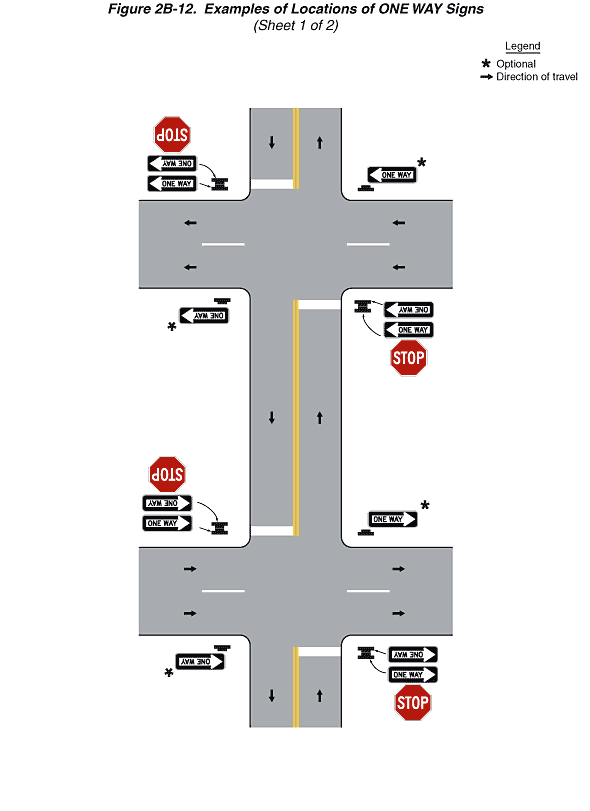
Figure 2B-12. Examples of Locations of ONE WAY Signs (Sheet 1 of 2)
This figure shows an example of locations of ONE WAY signs. This figure is composed of two sheets.
Sheet 1 of this figure shows a vertical roadway intersecting two horizontal roadways. Black arrows on the vertical roadway indicate that the direction of travel is one lane in each direction, and a solid double yellow line separates the opposing direction lanes, except through the two intersections. Solid white stop lines extend across the approach lanes in advance of each intersection. Black inverted "Ts" denote signs. A legend shows an asterisk indicating optional use and a black arrow indicating the direction of travel in the lanes.
Black arrows on the horizontal roadways indicate that the direction of travel is one way west to east on the lower roadway and one way east to west on the upper roadway. A broken white line separates the two eastbound through lanes, and another separates the two westbound through lanes.
At the bottom of the figure and to the right of the northbound travel lane in advance of the intersection with the lower horizontal roadway, a sign assembly is shown. It is shown as a One Way sign pointing east (to the right) above a Stop sign. These signs are shown facing south. A second One Way sign pointing east (to the left) is shown mounted back-to-back with the first one and facing north.
On the far side of the intersection with the lower horizontal roadway, another One Way sign pointing east (to the right) is shown to the right of the northbound travel lane and facing south. An asterisk is shown to its right.
Near the top of the figure and to the right of the northbound travel lane in advance of the intersection with the upper horizontal roadway, a sign assembly is shown. It is shown as a One Way sign pointing west (to the left) above a Stop sign. These signs are shown facing south. A second One Way sign pointing west (to the right) is shown mounted back-to-back with the first one and facing north.
On the far side of the intersection with the upper horizontal roadway, another One Way sign pointing west (to the left) is shown to the right of the northbound travel lane facing south. An asterisk is shown to its right.
The same series of One Way and Stop signs is shown for the southbound lanes of the vertical roadway.
Continue to: Sheet 2
